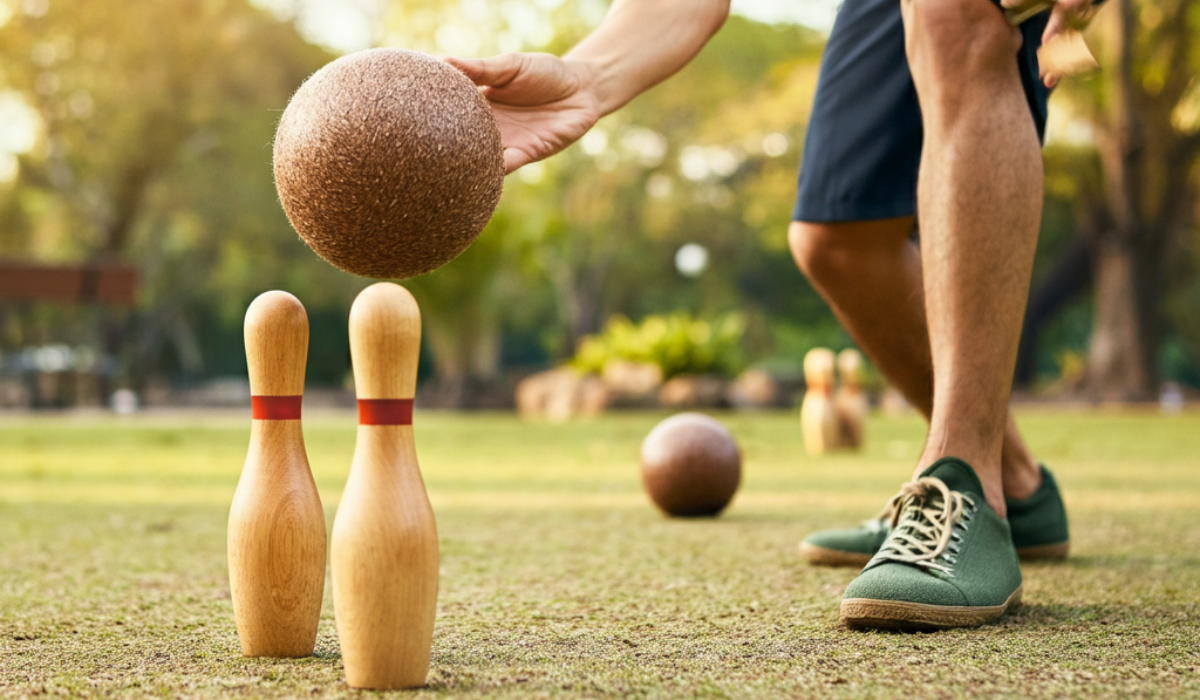Sustainability is finding its way into every corner of our lives. Why should sports equipment be any different? For athletes passionate about sustainable living, exploring the use of plant-based materials in manufacturing sports equipment like boliche (bowling) balls is fascinating and essential.
But what plants can we use for this purpose, and how do they pave the way for eco-friendly sports gear? This blog dives deep into the potential of plant-based materials for boliche equipment and highlights how they combine performance, innovation, and sustainability to meet modern demands.
Why Go Plant-Based for Sports Equipment?
Traditional sports equipment, including bowling balls, often relies on synthetics and petroleum-based materials that negatively impact the environment. By switching to plant-based alternatives, manufacturers can reduce waste, lower carbon footprints, and create biodegradable equipment that aligns with ecologically responsible practices.
Plant-based materials are not only environmentally sustainable but also incredibly versatile, lending themselves to durable, lightweight, and strong equipment crucial for sports like boliche.
Innovative Plant-Based Materials for Boliche
When discussing “what plants can we use for sports boliche,” the options are surprisingly diverse. Let’s explore the most promising plant-based materials for sustainable sports equipment design.
1. Flax Fibers
Flax fibers are emerging as a game-changer in the world of sports equipment. Known for their strength, flexibility, and lightweight properties, flax fibers are used in cutting-edge biocomposites like Ekoa®. This composite combines flax with plant-based resins to mimic the strength of wood while being far more sustainable.
Uses in Sports Equipment:
- Currently used in bicycle frames and lacrosse sticks, flax-based composites could easily extend to boliche balls, ensuring they remain durable yet lightweight.
2. Bamboo
Bamboo is a favorite in sustainable manufacturing due to its rapid growth and strength-to-weight ratio. Its flexibility and rigidity make it ideal for boliche balls and other sports equipment where durability meets versatility.
Uses in Sports Equipment:
- Traditionally utilized in sports like fencing and flooring, bamboo shows promise as a key material for sustainable bowling balls.
3. Rattan
Harvested from tropical palms, rattan is prized for its strength and inherent flexibility, making it perfect for equipment that requires a robust yet slightly ‘giving’ structure. Its applications in modern, plant-based boliche equipment could be revolutionary.
Uses in Sports Equipment:
- Rattan has long been used for polo mallets, and its ability to absorb impact could translate into striking boliche equipment with reduced environmental impact.
4. Natural Rubber
Derived from the latex of rubber trees, natural rubber is already a staple in sports manufacturing. This renewable resource could play a key role in creating eco-friendly boliche balls, offering the elasticity and resilience required for competitive play.
Uses in Sports Equipment:
- Natural rubber could help move boliche equipment away from petroleum-based materials, from soccer balls to tennis grips.
5. Corn-Based Plastics
Biodegradable plastics made from corn starch, such as polylactic acid (PLA), are a groundbreaking alternative to traditional plastics. They are environmentally friendly, break down more readily in nature, and retain the durability needed for sports equipment like boliche balls.
Uses in Sports Equipment:
- Corn-based polymers are already successfully integrated into balls and protective gear, demonstrating their potential for boliche applications.
6. Responsibly Sourced Wood
Thanks to their strength, resilience, and traditional feel, hardwoods like ash, maple, and engineered wood remain time-tested materials in sports manufacturing. Responsibly sourced timber might offer a viable core material for boliche balls, contributing to a bio-circular economy.
Uses in Sports Equipment:
- Wooden baseball bats and hockey sticks showcase the efficacy of this material, which could also be adapted for boliche.
Benefits of Plant-Based Boliche Equipment
Integrating these materials into boliche sports equipment isn’t just about saving the planet; it also elevates the playing experience. Each material contributes in unique ways:
- Durability: Bamboo and flax-based composites deliver a robust lifespan without compromising performance.
- Lightweight Design: Flax fibers and natural rubber ensure that equipment is easy to handle and maneuver.
- Biodegradability: Materials like corn-based plastics minimize waste, ensuring that sports gear doesn’t end up in landfills indefinitely.
- Aesthetic Appeal: Plant-based designs offer beautiful, natural finishes that make each boliche ball unique.
The Role of Collaboration and Innovation
The eco-friendly sports movement is only possible through a collaborative approach. Botanists, materials scientists, and sports manufacturers are working to refine plant-based materials, ensuring they meet the rigorous demands of competitive play. Biodegradable boliche balls may become a tournament staple, highlighting how eco-innovation can enhance rather than hinder sporting traditions.
What is the Best Grass for Bowling Greens?
While boliche equipment is one part of bowling, let’s not forget the greens themselves. EuroGrass Pro Greens, a blend of fescue and browntop bent grass, is popular for creating smooth, high-quality greens. Its exceptional performance ensures an even playing field for boliche enthusiasts.
How to Maintain Bowling Greens Sustainably
To fully support eco-conscious sports, sustainability should extend to green maintenance. Follow these tips for environmentally friendly care:
- Scarify Regularly (every 2–3 weeks): This practice reduces debris build-up and promotes healthy grass growth.
- Fertilize (4–5 times a year): Opt for organic or slow-release fertilizers for minimal environmental impact.
- Roll Weekly to keep the surface even while avoiding overcompaction.
Shaping the Future of Sustainable Sports Equipment
The next generation of boliche equipment doesn’t just need sustainable materials. It needs sustainable practices. By combining innovative plant-based resources like flax fibers, bamboo, and natural rubber with responsible maintenance techniques, the world of boliche can align with the global drive for eco-friendliness.

